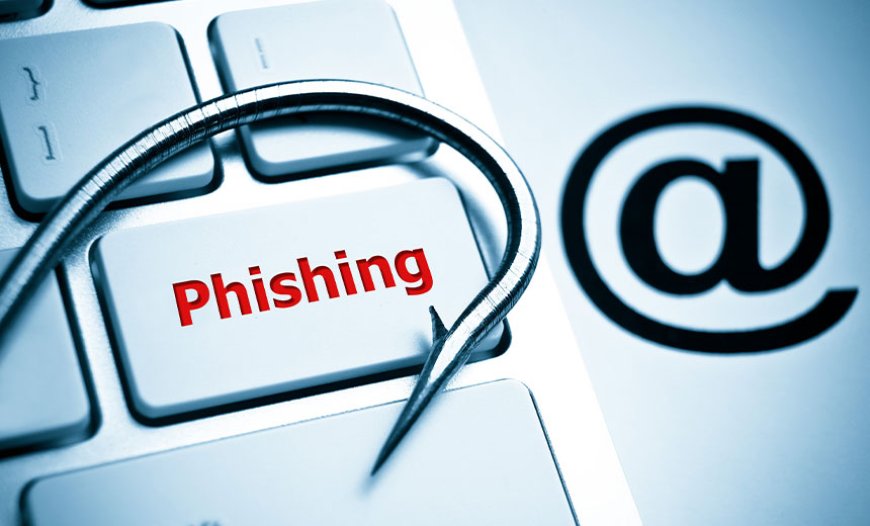Phishing Attacks 2024: New Tactics and How to Combat Them
In 2024, phishing attacks have become more sophisticated, utilizing AI, social engineering, and business email compromise tactics to deceive victims. Organizations must implement advanced defenses like multi-factor authentication, employee training, and email filtering to combat these growing threats. Codelancer's cybersecurity solutions can help businesses strengthen their defenses and prevent phishing attacks.

Phishing attacks remain one of the most prevalent threats in cybersecurity, and as cybercriminals evolve their tactics, these attacks continue to become more sophisticated and dangerous. In 2024, phishing attacks are leveraging new technologies, social engineering strategies, and AI-driven tools to deceive individuals and organizations. Phishing can lead to stolen credentials, financial losses, and severe reputational damage. To effectively combat phishing, businesses must understand the latest tactics and implement advanced defenses to protect their systems and sensitive data.
Why Phishing Attacks Are More Dangerous in 2024
- AI-Powered Phishing Scams: AI and machine learning are increasingly used by attackers to create more convincing phishing emails and websites, mimicking legitimate sources with a high degree of accuracy.
- Credential Harvesting & Identity Theft: Phishing attacks are often designed to steal login credentials, enabling cybercriminals to gain unauthorized access to sensitive data, financial resources, and critical systems.
- Business Email Compromise (BEC): Phishing is being used in business email compromise attacks, where attackers impersonate high-level executives to authorize fraudulent transactions or steal confidential business data.
- Greater Social Engineering Techniques: Attackers are relying more on personalized tactics, often using social media and public information to craft tailored phishing attempts that increase the likelihood of success.
Key Features of Phishing Attacks in 2024
- AI-Driven Phishing Campaigns: Attackers utilize AI to craft highly personalized and believable phishing emails, increasing the chances that victims will fall for the scam.
- Credential Phishing & Malware Payloads: Phishing emails may contain malware or links to fake websites designed to harvest login credentials or deliver harmful software to the victim's device.
- Social Media Exploitation: Attackers gather personal information from social media platforms to create more targeted and convincing phishing schemes, leveraging knowledge of the victim’s contacts and preferences.
- Use of Legitimate-Looking Websites: Phishing emails often direct users to fake websites that closely resemble real ones, deceiving them into entering sensitive information like passwords, credit card details, and personal identifiers.
How to Combat Phishing Attacks in 2024
- User Awareness and Training: Regularly educating employees about phishing tactics and best practices can help them recognize suspicious emails, links, and attachments, significantly reducing the likelihood of a successful attack.
- Advanced Email Filtering and Detection: Implementing AI-based email filtering tools can help identify phishing emails before they reach inboxes, blocking malicious content and preventing threats from being acted upon.
- Multi-Factor Authentication (MFA): Enforcing MFA across all organizational accounts can provide an additional layer of protection, reducing the risk of account compromise even if login credentials are obtained by attackers.
- Regular Phishing Simulations: Running phishing simulations within the organization helps employees recognize phishing attempts and respond appropriately, providing a controlled environment for skill development.
- Continuous Security Monitoring: Proactively monitoring network traffic and user behavior can help identify signs of phishing attacks early, allowing for swift intervention and containment.
Why Organizations Need to Take Phishing Threats Seriously
With phishing attacks becoming more sophisticated and difficult to detect, organizations need to invest in both technology and human resources to defend against them. Here’s why businesses must take phishing threats seriously:
- Increased Attack Sophistication: Phishing attacks in 2024 are much harder to detect due to AI tools and advanced social engineering strategies. Organizations must stay ahead of these evolving tactics.
- Financial and Reputational Damage: Successful phishing attacks can lead to significant financial losses, stolen sensitive data, and damage to an organization’s reputation.
- Compliance Risks: Many industries are required to follow specific data protection regulations, and a successful phishing attack could lead to non-compliance and legal ramifications.
Strengthen Your Defenses Against Phishing Attacks
Phishing remains a major threat in 2024, but with the right strategies and tools, businesses can mitigate the risks posed by these attacks. By implementing advanced security measures and educating employees, companies can defend against phishing threats and safeguard their sensitive information.
Contact us today to learn more about how our cybersecurity solutions can help protect your organization from phishing attacks and other emerging threats.
For more information or to inquire about our services, visit our website or reach out to us directly. Defend your business from phishing with expert cybersecurity solutions!
What's Your Reaction?








































